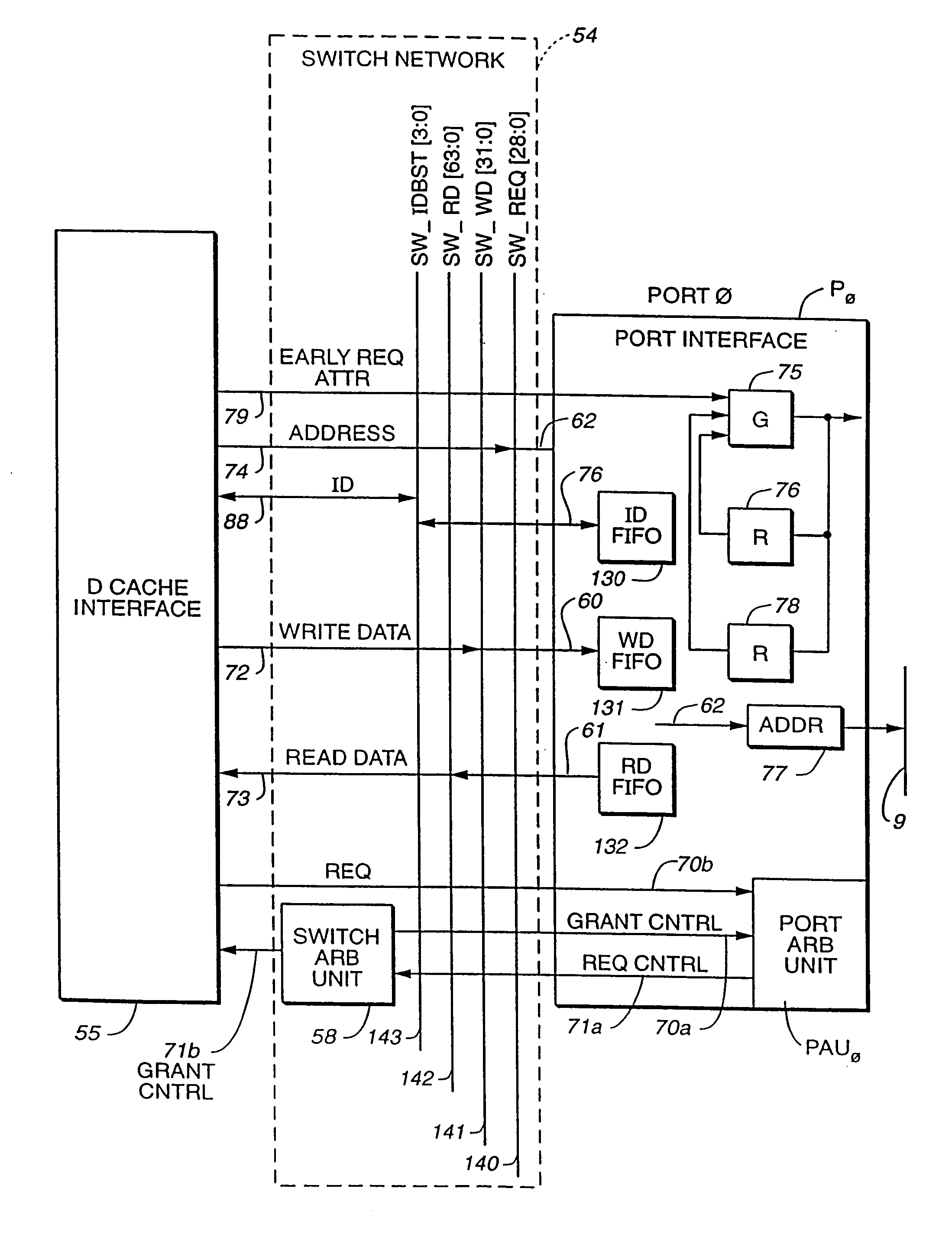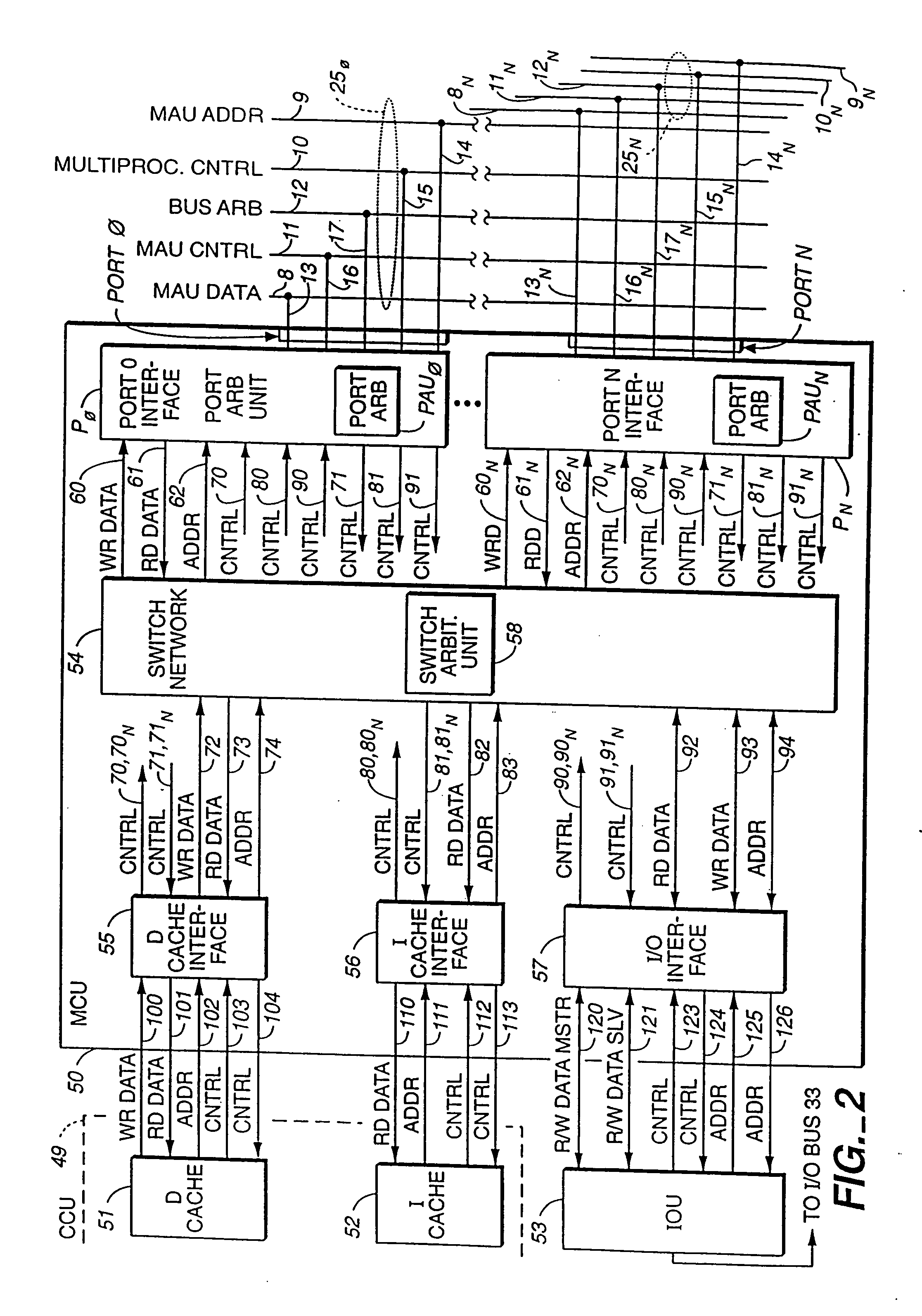Microprocessor architecture capable of supporting multiple heterogeneous processors
a microprocessor and processor technology, applied in the direction of multi-programming arrangements, memory adressing/allocation/relocation, instruments, etc., can solve the problem of maintaining the priority of row match, and achieve the effect of reducing memory latency, reducing wires needed, and adding more latency to memory requests
- Summary
- Abstract
- Description
- Claims
- Application Information
AI Technical Summary
Benefits of technology
Problems solved by technology
Method used
Image
Examples
Embodiment Construction
[0052] Referring to FIG. 1, there is provided in accordance with the present invention a microprocessor architecture designated generally as 1. In the architecture 1 there is provided a plurality of general purpose microprocesors 2, 3, 4 . . . N, a special purpose processor 5, an arbiter 6 and a memory / memory array unit (MAU) 7. The microprocessors 2-N may comprise a plurality of identical processors or a plurality of heterogeneous processors. The special purpose processor 5 may comprise, for example, a graphics controller. All of the processors 2-5 are coupled via one or more memory ports PORTD . . . PORTN to an MAU system bus 25 comprising an MAU data bus 8, a ROW / COL address bus 9, a multiprocessor control bus 10, an MAU control bus 11 and a bus arbitration control signal bus 12 by means of a plurality of bidirectional signal buses 13-17, respectively. The bus 12 is used, for example, for requesting arbitration to access and for granting or indicating that the system data bus 8 i...
PUM
 Login to View More
Login to View More Abstract
Description
Claims
Application Information
 Login to View More
Login to View More - R&D
- Intellectual Property
- Life Sciences
- Materials
- Tech Scout
- Unparalleled Data Quality
- Higher Quality Content
- 60% Fewer Hallucinations
Browse by: Latest US Patents, China's latest patents, Technical Efficacy Thesaurus, Application Domain, Technology Topic, Popular Technical Reports.
© 2025 PatSnap. All rights reserved.Legal|Privacy policy|Modern Slavery Act Transparency Statement|Sitemap|About US| Contact US: help@patsnap.com



